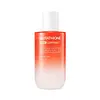What's inside
What's inside
 Key Ingredients
Key Ingredients

 Benefits
Benefits

 Concerns
Concerns

No concerns
 Ingredients Side-by-side
Ingredients Side-by-side

Water
Skin ConditioningButylene Glycol
HumectantMethylpropanediol
SolventCentella Asiatica Extract
CleansingCaprylyl Glycol
EmollientGlycerin
HumectantOctyldodeceth-16
EmulsifyingPanthenol
Skin ConditioningSodium Hyaluronate
HumectantCeramide NP
Skin ConditioningMadecassoside
AntioxidantPhospholipids
Skin ConditioningHydrogenated Lecithin
EmulsifyingCaprylic/Capric Triglyceride
MaskingSodium Polyacryloyldimethyl Taurate
Emulsion StabilisingStyrene/Vp Copolymer
Caprylhydroxamic Acid
Diethoxyethyl Succinate
SolventWater, Butylene Glycol, Methylpropanediol, Centella Asiatica Extract, Caprylyl Glycol, Glycerin, Octyldodeceth-16, Panthenol, Sodium Hyaluronate, Ceramide NP, Madecassoside, Phospholipids, Hydrogenated Lecithin, Caprylic/Capric Triglyceride, Sodium Polyacryloyldimethyl Taurate, Styrene/Vp Copolymer, Caprylhydroxamic Acid, Diethoxyethyl Succinate
Water
Skin ConditioningHydrogenated Polydecene
EmollientPropanediol
SolventTrehalose
HumectantNiacinamide
SmoothingSodium Chloride
MaskingButylene Glycol
HumectantDipropylene Glycol
HumectantGlutathione
Phosphatidylcholine
EmulsifyingPolyglyceryl-10 Laurate
Skin Conditioning1,2-Hexanediol
Skin ConditioningHyaluronic Acid
HumectantHydrolyzed Hyaluronic Acid
HumectantSodium Hyaluronate
HumectantPanthenol
Skin ConditioningHydrogenated Lecithin
EmulsifyingCellulose Gum
Emulsion StabilisingHydroxyacetophenone
AntioxidantSodium Phytate
Sodium Dna
Skin Conditioning3-O-Ethyl Ascorbic Acid
Skin ConditioningGlycerin
HumectantHydrolyzed Gardenia Florida Extract
AntioxidantHydrolyzed Malt Extract
Skin ConditioningHydrolyzed Viola Tricolor Extract
Skin ProtectingCurcuma Longa Root Extract
MaskingMelia Azadirachta Flower Extract
Skin ConditioningMelia Azadirachta Leaf Extract
Skin ConditioningCorallina Officinalis Extract
Skin ConditioningMelia Azadirachta Bark Extract
AntimicrobialMoringa Oleifera Seed Oil
EmollientOcimum Sanctum Leaf Extract
Skin ConditioningEthylhexylglycerin
Skin ConditioningAdenosine
Skin ConditioningSodium Citrate
BufferingDisodium EDTA
Juniperus Mexicana Oil
MaskingElettaria Cardamomum Seed Oil
MaskingVetiveria Zizanoides Root Oil
MaskingAmmonium Acryloyldimethyltaurate/Vp Copolymer
Citric Acid
BufferingAscorbic Acid
AntioxidantTocopherol
AntioxidantHelianthus Annuus Seed Oil
EmollientCapryloyl Salicylic Acid
ExfoliatingWater, Hydrogenated Polydecene, Propanediol, Trehalose, Niacinamide, Sodium Chloride, Butylene Glycol, Dipropylene Glycol, Glutathione, Phosphatidylcholine, Polyglyceryl-10 Laurate, 1,2-Hexanediol, Hyaluronic Acid, Hydrolyzed Hyaluronic Acid, Sodium Hyaluronate, Panthenol, Hydrogenated Lecithin, Cellulose Gum, Hydroxyacetophenone, Sodium Phytate, Sodium Dna, 3-O-Ethyl Ascorbic Acid, Glycerin, Hydrolyzed Gardenia Florida Extract, Hydrolyzed Malt Extract, Hydrolyzed Viola Tricolor Extract, Curcuma Longa Root Extract, Melia Azadirachta Flower Extract, Melia Azadirachta Leaf Extract, Corallina Officinalis Extract, Melia Azadirachta Bark Extract, Moringa Oleifera Seed Oil, Ocimum Sanctum Leaf Extract, Ethylhexylglycerin, Adenosine, Sodium Citrate, Disodium EDTA, Juniperus Mexicana Oil, Elettaria Cardamomum Seed Oil, Vetiveria Zizanoides Root Oil, Ammonium Acryloyldimethyltaurate/Vp Copolymer, Citric Acid, Ascorbic Acid, Tocopherol, Helianthus Annuus Seed Oil, Capryloyl Salicylic Acid
 Reviews
Reviews

Ingredients Explained
These ingredients are found in both products.
Ingredients higher up in an ingredient list are typically present in a larger amount.
Butylene Glycol (or BG) is used within cosmetic products for a few different reasons:
Overall, Butylene Glycol is a safe and well-rounded ingredient that works well with other ingredients.
Though this ingredient works well with most skin types, some people with sensitive skin may experience a reaction such as allergic rashes, closed comedones, or itchiness.
Learn more about Butylene GlycolGlycerin is already naturally found in your skin. It helps moisturize and protect your skin.
A study from 2016 found glycerin to be more effective as a humectant than AHAs and hyaluronic acid.
As a humectant, it helps the skin stay hydrated by pulling moisture to your skin. The low molecular weight of glycerin allows it to pull moisture into the deeper layers of your skin.
Hydrated skin improves your skin barrier; Your skin barrier helps protect against irritants and bacteria.
Glycerin has also been found to have antimicrobial and antiviral properties. Due to these properties, glycerin is often used in wound and burn treatments.
In cosmetics, glycerin is usually derived from plants such as soybean or palm. However, it can also be sourced from animals, such as tallow or animal fat.
This ingredient is organic, colorless, odorless, and non-toxic.
Glycerin is the name for this ingredient in American English. British English uses Glycerol/Glycerine.
Learn more about GlycerinHydrogenated Lecithin is created from the hydrogenation of lecithin (a group of phospholipids). Hydrogenation is a chemical reaction between hydrogen and another element.
This ingredient is an emollient and emulsifier. As an emollient, it helps soften skin by trapping moisture within. As an emulsifier, it prevents oil and water ingredients from separating.
Panthenol is a common ingredient that helps hydrate and soothe the skin. It is found naturally in our skin and hair.
There are two forms of panthenol: D and L.
D-panthenol is also known as dexpanthenol. Most cosmetics use dexpanthenol or a mixture of D and L-panthenol.
Panthenol is famous due to its ability to go deeper into the skin's layers. Using this ingredient has numerous pros (and no cons):
Like hyaluronic acid, panthenol is a humectant. Humectants are able to bind and hold large amounts of water to keep skin hydrated.
This ingredient works well for wound healing. It works by increasing tissue in the wound and helps close open wounds.
Once oxidized, panthenol converts to pantothenic acid. Panthothenic acid is found in all living cells.
This ingredient is also referred to as pro-vitamin B5.
Learn more about PanthenolSodium Hyaluronate is hyaluronic acid's salt form. It is commonly derived from the sodium salt of hyaluronic acid.
Like hyaluronic acid, it is great at holding water and acts as a humectant. This makes it a great skin hydrating ingredient.
Sodium Hyaluronate is naturally occurring in our bodies and is mostly found in eye fluid and joints.
These are some other common types of Hyaluronic Acid:
Learn more about Sodium HyaluronateWater. It's the most common cosmetic ingredient of all. You'll usually see it at the top of ingredient lists, meaning that it makes up the largest part of the product.
So why is it so popular? Water most often acts as a solvent - this means that it helps dissolve other ingredients into the formulation.
You'll also recognize water as that liquid we all need to stay alive. If you see this, drink a glass of water. Stay hydrated!
Learn more about Water